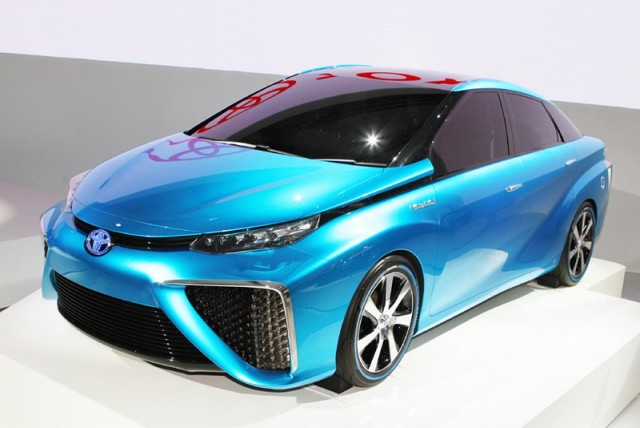Is this, at last then, the future? Hydrogen power for cars has been talked about as a possible replacement for petrol and diesel for nigh on twenty years now, and always it seemed to be as far away as ever, filed in the same drawer as cold fusion and laser pistols.
But now Toyota, along with several other car makers including Mercedes-Benz and GM, has promised to put a hydrogen-powered road car into series production by 2015. Previous hydrogen cars, including Honda's FCX Clarity and Mazda's rotary-engined RX-8h and 5h, have been produced in strictly limited numbers and only leased to carefully chosen clients.
This is different. The FCV is still a concept, but it closely previews a car that will go on sale in around 12 months' time. It is powered by a 100kW stack of fuel cells, which combine compressed hydrogen (stored in two small 70mPa tanks) with oxygen to produce electricity with water vapour as the only by-product and emission. Toyota claims that the car has a touring range on full tanks of 500 kilometres and a refuelling time of just three minutes. Those are both figures that rather nicely indicate a hydrogen car's advantage over current battery electric vehicles, which, Tesla Model S aside, have ranges of around 200 kilometres on average and recharging times of up to eight hours.
Toyota Australia's executive director sales and marketing Tony Cramb said the FCV Concept showed Toyota was a pioneering company that achieved great results when it set its mind to a challenge.
"When Toyota introduced the Prius in 1997, no-one knew what a hybrid was - or that Toyota had been developing the technology for more than 30 years," Mr Cramb said.
"Yet global sales of Toyota and Lexus hybrid vehicles have now topped 5.5 million vehicles and we're building a hybrid version of Camry here in Australia."
"As the leader in hybrid technology, it is a natural step for Toyota to consider alternate fuels such as hydrogen because of its enormous potential in supporting energy diversification and zero emissions while offering the same convenience as today's petrol-powered cars."
The FCV has been designed to reflect the water-based emissions of hydrogen power, including (obviously) the liquid blue paintwork, as well as the door profile, a wave motif built into the fuel filler cap and a rear end that is said to have been influenced by catamaran yacht design.
Anything else?
Toyota is banking future fuel cell success on two things. One, that a hydrogen refuelling network will be widely established in the US, Europe and Japan by the mid-2020s and two, that a fuelled up FCV has enough range for a full week of an average Japanese motorist's driving needs. The price could well be a stumbling block though. Hydrogen tech is still viciously expensive and the on-the-road price for the FCV is expected to be well into the six-figure range.

